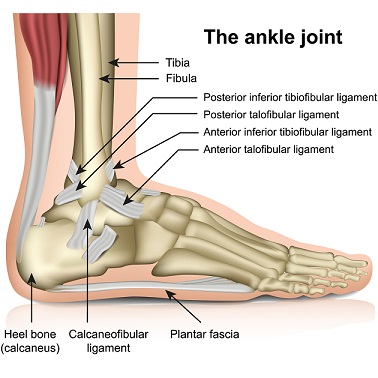Ankle Injuries
What is an Ankle Sprain?
A minor ankle sprain can often be self-managed with a period of protection followed by gradual loading with ice and elevation. But when should you seek physio help? Generally you will know or have a gut feeling that you need some expert assistance with the more serious ankle injuries. Some of the signs that you need physio assessment after an acute ankle injury include:
- Difficulty walking or placing weight on the affected leg
- Pain and tenderness over the bone
- Night pain/ Difficulty sleeping due to pain
If you present with any of these symptoms we will usually refer you for a scan to determine the exact nature of the injury. X-rays, Ultrasound and MRI can all be helpful depending on what we are looking to confirm.
How can I avoid Ankle Sprains?
Taping your Ankles is a good place to start. Rebound can also assist with exercises that help to improve balanced running and proprioception. We also sell Ankle Braces here at the clinic.
Types of Injuries
A typical sprained ankle will injure the lateral ligaments – ATFL, CFL and PTFL. This usually happens with an inversion injury when the foot twists inwards. Depending on the severity, current guidelines recommend the use of an ankle brace or moon boot for a short duration and where pain allows continuing to walk on the leg. Joint mobilization and massage reduce swelling and restore flexibility and a graduated exercise program can help reduce the rate of re-injury.

We typically find most patients return to their pre injury function within 4-8 weeks. Sometimes in a small percentage of people chronic instability occurs. The ankle continues to feel weak and there are numerous episodes of injury. In these cases surgical repair of the ankle ligaments (ankle reconstruction) can be considered. My ankle still hurts? If it has been 2-3 months after your injury and you are still experiencing problems there may be one of 3 scenarios happening:
- Something has been misdiagnosed and more investigations need to be undertaken
- You have been overdoing it and the ankle has developed a capsulitis
- The injury hasn’t been rehabilitated adequately
Persistent ankle swelling
Many people worry about persistent swelling after an ankle injury or surgery. If that is the sole symptom we don’t tend to worry as it can often take many months for the ankle assume its normal appearance.
However if accompanied by pain and stiffness there might be reason for concern and we would always recommend checking these out.
Medication for ankle sprains?
NSAIDs may be used by patients who have incurred an acute lateral ankle sprain for the primary purpose of reducing pain and swelling. However, care should be taken in NSAID usage as it is associated with complications and may suppress or delay the natural healing process.
Tendinopathy
Tendinopathies are usually the next most common cause of ankle pain we see. Sometimes you will see a tendinopathy following an ankle sprain. However, with most of these injuries there is no obvious twist or sprain responsible. Instead the pain will commence after increasing activity too quickly or in an insidious fashion. Frequently there may be some biomechanical predisposition like a pronated foot or varus/valgus ankle posture.
Pain on the outside of the ankle, next to the fibula is commonly attributed to peroneal tendon pathology. Whilst pain along the inner aspect of the ankle, behind and below the medial malleoulus is seen with tibialis posterior tendinopathy. Physiotherapy and correction of any underlying biomechanical flaw is important to ensure there is no progression of injury. Chronic pathology in the tendons around the ankle can lead to tearing and irreversible injury.
Other Injuries
Some of the other more serious ankle injuries we see include, webber fractures, high ankle sprains (syndesmosis), 5th metatarsal fractures and talar dome (cartilage) injuries.
In our experience most of these more serious injuries do well if diagnosed early and appropriate treatment administered. The main aim across the rehab of these injuries is to promote movement and loading in a gradual fashion whilst the patient is immobilized or on crutches.
It is imperative that high ankle sprains (HAS) are diagnosed early as they require a period of non-weight bearing on crutches or surgical intervention. They are often missed as they can present very similarly to a standard ankle sprain with a similar inversion mechanism of injury. A twist on the planted foot is the other way an individual can sustain a HAS. If managed appropriately these injuries make an excellent recovery but can take up to 6 months before a return to full activities can take place.